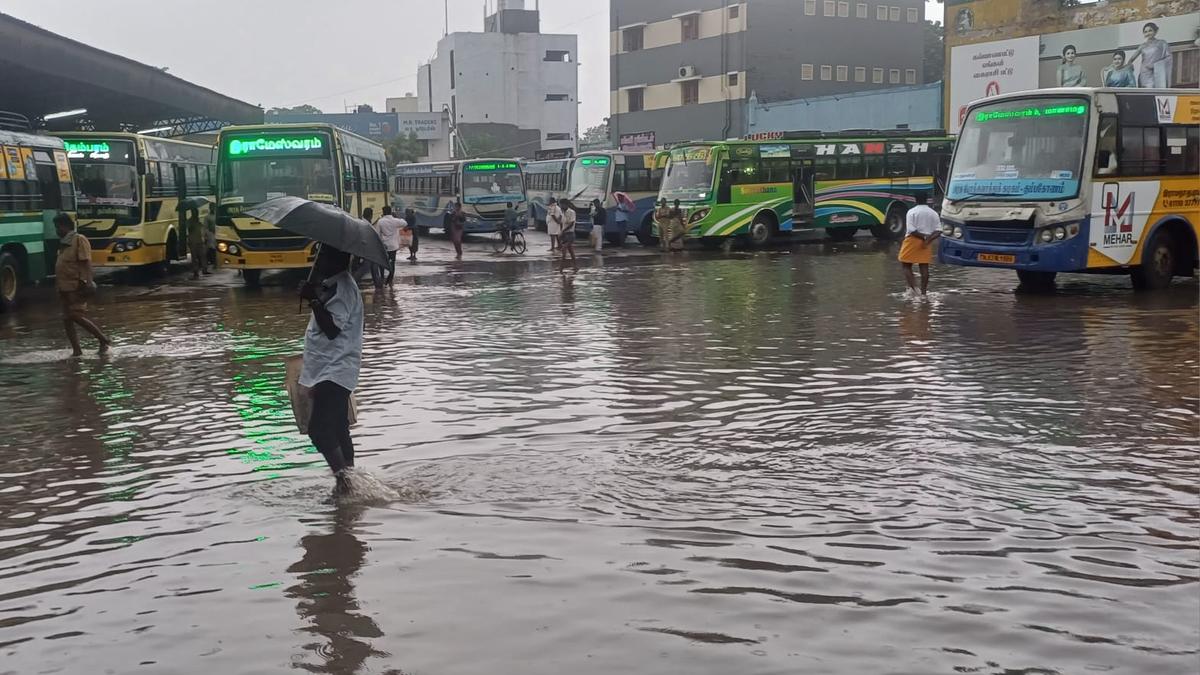 |
|
The southern Indian state of Tamil Nadu experienced a significant meteorological event on Wednesday afternoon, when a cloudburst over Pamban in the Ramanathapuram district triggered torrential rainfall. The intensity of the downpour was remarkable, with the Pamban weather station recording nearly 19 centimeters of rainfall within a mere three-hour period. This extreme weather event was officially confirmed as a cloudburst by the Regional Meteorological Centre (RMC) in Chennai. The unprecedented rainfall underscores the unpredictable and potentially devastating nature of extreme weather patterns, highlighting the need for robust disaster preparedness and mitigation strategies in the region.
The cloudburst wasn't an isolated incident. Already grappling with heavy rainfall across several south coastal districts and the delta region for six consecutive days prior to the cloudburst, Tamil Nadu found itself facing an escalating crisis. In response to the worsening conditions, the RMC escalated its alert level to red, signaling an extremely high likelihood of exceptionally heavy rainfall in several districts, including Ramanathapuram, Tiruvarur, Nagapattinam, and Karaikal. This red alert remained in effect until 8:30 a.m. on Thursday, urging residents to remain vigilant and take necessary precautions to protect themselves and their property. The intensity of the rainfall only intensified; by 5:30 p.m. on Wednesday, Pamban had accumulated a staggering 28 centimeters of rainfall.
The sheer volume of rainfall in such a short span highlights the severity of the cloudburst. S. Balachandran, the Additional Director General of Meteorology in Chennai, detailed that the Pamban weather station recorded an astonishing 10 centimeters of rainfall within a single hour, between 1 p.m. and 2 p.m. This aligns perfectly with the definition of a cloudburst, characterized by sudden, intense rainfall exceeding 10 centimeters per hour concentrated over a relatively small geographical area. The meteorological explanation offered points to the formation of strong cloud cover as the primary catalyst for this intense, short-lived rain event. The upper air circulation over the Comorin area played a significant role in driving the heavy rainfall across the south coastal and delta districts. Furthermore, a weather system situated over the Arabian Sea contributed to the prolonged wet spell, maintaining the vigor of the northeast monsoon over south Tamil Nadu, according to Mr. Balachandran.
The RMC's forecast extended beyond the immediate aftermath of the cloudburst, predicting very heavy rainfall in isolated locations within the Tirunelveli and Kanniyakumari districts and heavy rainfall across the delta districts up until Thursday morning. The meteorological agency's projections extend further into the future, tracking a new weather system with the potential to reignite rainfall across coastal Tamil Nadu. This new system is anticipated to bring intense rainfall to the delta districts specifically on November 25th and 26th. Moreover, some areas in north Tamil Nadu could also experience heavy rainfall on November 26th. These forecasts underscore the continuing threat of extreme weather events in the region and the necessity for ongoing monitoring and preparedness.
The impact of these extreme weather events extends far beyond mere inconvenience; they pose significant risks to human life, infrastructure, agriculture, and the overall well-being of the affected communities. Flooding is a major concern, potentially leading to displacement, damage to property and crops, disruption of transportation networks, and even loss of life. The government and relevant agencies must be prepared to respond effectively, ensuring prompt rescue and relief efforts for those in need. The long-term implications also warrant attention. The economic repercussions of widespread damage to infrastructure and agriculture could be substantial, requiring significant investment in recovery and rebuilding efforts. Furthermore, the repeated occurrence of extreme weather events serves as a stark reminder of the urgent need for proactive measures to mitigate the effects of climate change.
The events in Tamil Nadu serve as a potent case study of the increasingly unpredictable and extreme weather patterns impacting regions worldwide. The cascading effects of a cloudburst, amplified by pre-existing heavy rainfall, highlight the vulnerability of coastal and delta regions to intense precipitation. This case demands a comprehensive review of existing disaster management plans, an improvement in forecasting capabilities, and a strong commitment to invest in long-term infrastructure resilience. Furthermore, a deeper understanding of the underlying climatic factors is crucial to developing effective strategies for both adaptation and mitigation. The ongoing monitoring and precise predictions offered by the RMC are instrumental, and their timely warnings are crucial for saving lives and minimizing property damage. Ultimately, the incident underscores the need for collaboration between meteorological agencies, governmental bodies, and local communities to prepare for and effectively respond to the challenges posed by a changing climate.
